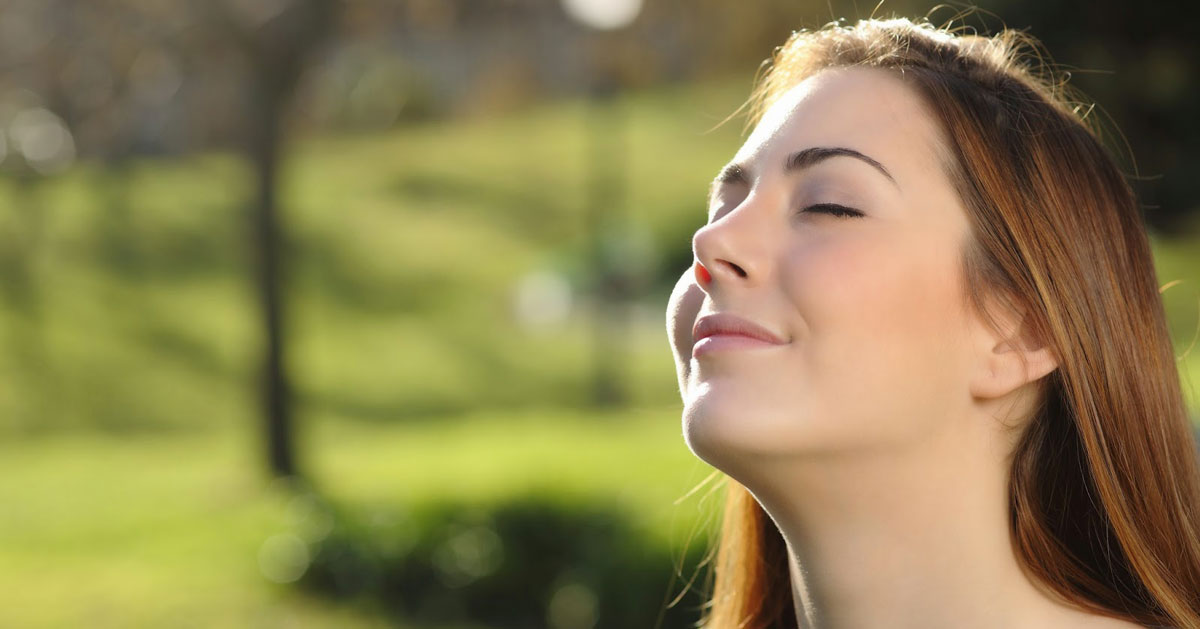Breathing Techniques to Reduce Stress and Aid in Recovery

by Nirmala Raniga, Founder and Director
From the moment we’re born, we breathe— taking in oxygen and expelling carbon dioxide through the process of respiration. In general, breathing is a simple, automatic—yet vital—function of our nervous systems, and does not require our attention. In healthy individuals, whether we are awake or asleep, areas deep in the brain align the breath with our activities and oxygen requirements without our intervention.
According to yogic tradition, the breath is far more than an automatic bodily function; it is our life force, or prana, the unseen energy that animates our bodies and minds. The breath is within our control and with practice, we can learn to use the breath to decrease our blood pressure, heart rates, and stress hormone levels, which can help improve our health and quality of life. For individuals with addictive behaviors, learning to control the breath can aid in breaking the cycle of addiction.
The following are some simple pranayama exercises, or breathing techniques, that can be practiced every day to help reduce stress and give us more clarity and energy. To begin any of the exercises, find a comfortable place to sit with your spine straight. You may sit on the floor, on a cushion in a cross-legged position, or choose to sit in a chair with your feet flat on the floor.
Calming Techniques
Witnessing the Breath
Witnessing the breath can ground us in the present moment, helping to alleviate anxieties associated with recalling the past or projecting the future.
To start, close your eyes. Inhale and exhale deeply through your nose slowly and easily. Begin to imagine the breath as it flows in through the nostrils and then out through the nostrils, in and out, inhaling and exhaling. Whenever your mind begins to wander, gently return your attention back to witnessing, or imagining the breath, inhaling and exhaling gently through the nose.
Continue in this way for 5 to 10 minutes.
Ujjayi Breathing – the Success Breath
Ujjayi breathing, or the Success Breath, can be particularly calming, helping to settle and focus the mind and body. When done correctly, Ujjayi breathing mimics the sound of the ocean, which can be quite soothing. This breathing technique also helps cool the back of the throat and balance both the cardiovascular and respiratory systems.
To practice Ujjayi breathing, inhale through the nose more deeply than in the previous techniques. Then, exhale through the nose, constricting the throat muscles, which will make a snoring sound.
For beginners, another way to practice this breathing technique is to inhale through the nose and make a snoring sound. Then, hold your hand in front of your face as though it is an imaginary mirror. Exhale through an open mouth like you are fogging that mirror. Try this two times. On the third attempt, at the end of the exhale, close your lips around the breath, and you will hear that snoring sound. Continue to practice this technique, breathing in and out only through the nose.
Practice Ujjayi breathing for 5 to 10 minutes.
Energizing and Cleansing Techniques*
Bhastrika – the Bellows Breath
An energizing and cleansing breath, Bhastrika, or the Bellows Breath, is very empowering.
Start by practicing slow, deep belly breathing through the nose. After a few deep breaths with a final, full exhale, begin forceful deep exhalations, followed by forceful deep inhalations through the nose—like a bellows—at the rate of one second per cycle. The entire breathing practice should originate from the diaphragm, and it is important to keep the head, neck, shoulders and chest relatively stable while the belly moves in and out.
Perform 10 rounds of Bhastrika breathing, then resume normal breathing and observe how you feel. If you feel lightheaded or tingly, return to normal breathing and only begin Bhastrika breathing again when you feel ready.
Kapalabhati – Shining Breath
Kapalabhati or Shining Breath, is a variation of the Bellows Breath, involving forceful exhalations followed by passive inhalations.
Begin by forcefully expelling the air from the lungs; then, allow the lungs to fill passively. Note that the primary source of movement in this technique is also the diaphragm.
Practice this breath 10 times, returning to normal breathing between cycles. As you breathe normally, witness how your body feels. Continue by repeating these cycles four times.
[*Please note, if you are pregnant or menstruating, it is best to refrain from practicing energizing breathing techniques.]
Research supports the concept that stress can have an especially adverse affect on those who struggle with addiction. In fact, substance abuse can often become a stressor itself, fueling the addiction cycle, which makes stress reduction all the more important for individuals who seek recovery. Fortunately, simply by controlling the breath, we can take steps to reduce stress and cultivate greater clarity, balance, and energy in our daily lives.
